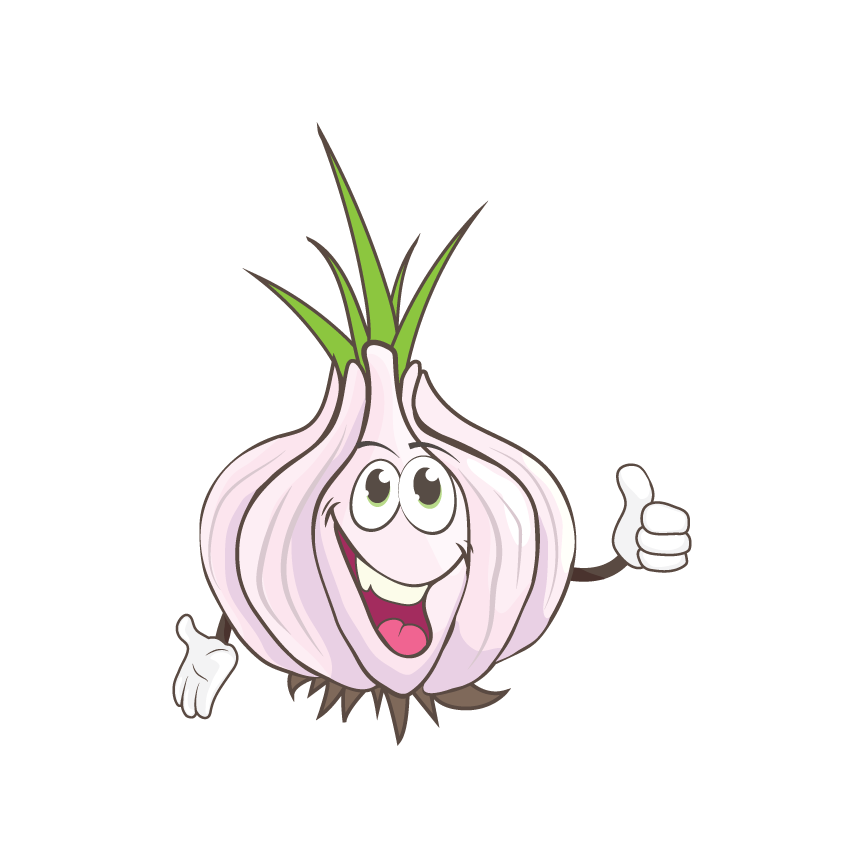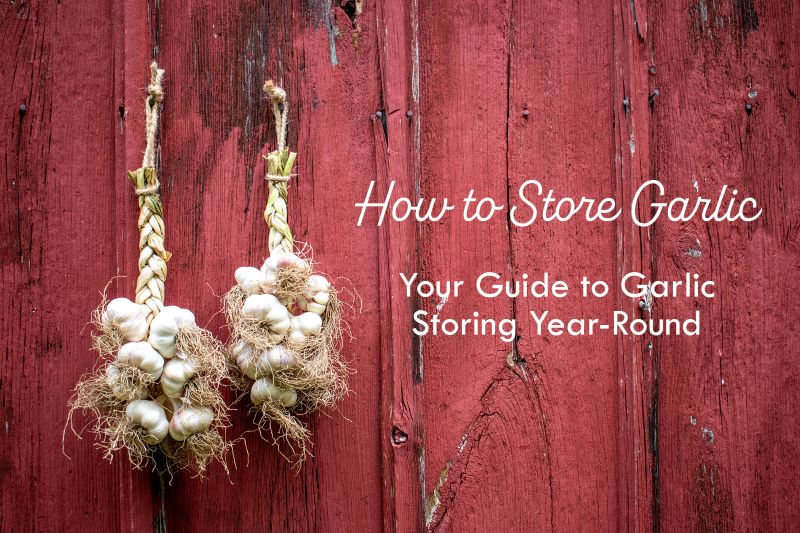
How to Store Garlic - Your Guide to the Garlic Storing Season
You’ve planted, grown, and harvested your garlic, and now it’s time to preserve the fruits–or bulbs–of your labor.
Or maybe you purchased garlic (lots of garlic) and want to make good on your investment. Either way, you have garlic, it’s storing season, and you want your garlic to last into next week, next month, and even next spring.
Does this sound like you? Here’s what you need to know about how to store garlic.
How to Store Garlic for Planting and Eating
Whether you’re wondering how to store garlic purchased for planting or how to store garlic after harvest, there are a few regularly recommended rules of thumb.
Whole bulbs of garlic can keep for 6-12 months or more when properly stored at the right temperature and in the correct environment.
Storing garlic uncovered, such as in a wire-mesh basket inside your cupboard or beneath a small, overturned clay pot, is ideal. You can also store garlic in a paper or mesh bag.
If you ordered garlic you are waiting to plant, you can likely store it in the same box it was shipped. Remove any packing materials from the box and keep the garlic in your basement, house, or any cool, dry place with plenty of airflow.
Bulk garlic waiting for planting can be left in its netted bags in a garage or a barn until it’s time to plant.
The guidelines for storing purchased garlic or bulk garlic apply to storing homegrown garlic.
Whether you are storing garlic from the garden or garlic purchased for planting, garlic must be kept in a cool, dark place, away from heat and out of sunlight.
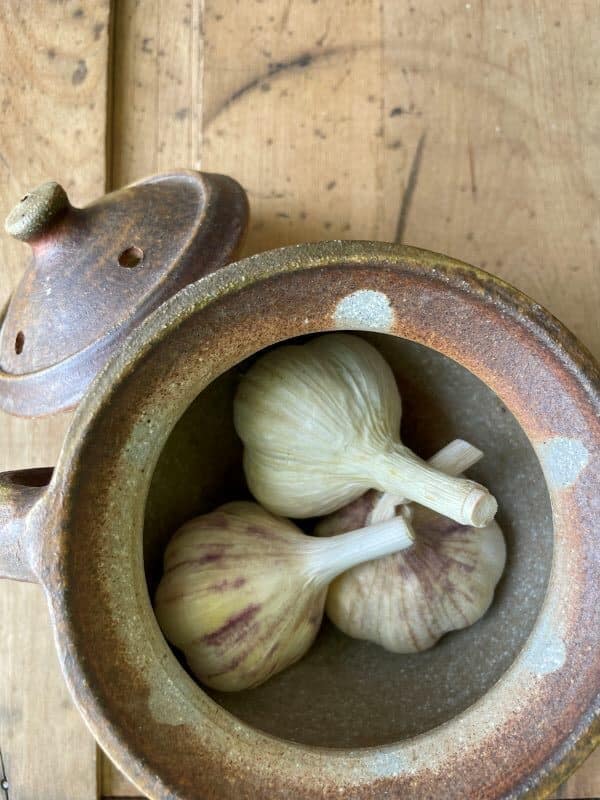
What's the Best Temperature for Storing Garlic?
Garlic is best-stored long-term when kept at a temperature between 35°F and 55°F in an environment with 40 percent to 60 percent humidity.
Storing garlic in a basement or root cellar at 60 degrees with 50 percent humidity is optimal for prolonged storage. However, you can also keep bulbs in a regularly air-conditioned or climate-controlled household.
Garlic needs to breathe, and it’s best to avoid storing your garlic in plastic bags or sealed containers that prevent airflow.
Storing your garlic in plastic bags can lead to mold, and while you want to avoid air restriction, too much air blowing on garlic bulbs will dehydrate them, dry them out, and decrease their storage life.
To avoid drying out your garlic, keep your bulbs away from dehumidifiers and direct, constant airflow in a space where the temperature is consistently cool.

Can I Store My Garlic in the Refrigerator?
If you don’t have access to a basement or cellar or live in regions that experience warmer temperatures year-round, you can store your garlic in the refrigerator.
To get the longest storage life from refrigerated garlic, put your garlic bulbs in a brown paper bag and store them in the crisper drawer. A crisper or humidity drawer, also called a vegetable drawer, is the compartment in a refrigerator designed for keeping produce fresh.
Keeping your garlic in a refrigerator is a great way to store it long-term because of the dark environment and constant, cool temperature. However, you don’t need to keep all your bulbs in the fridge.
To ensure you have fresh garlic throughout the fall and winter seasons, keep some garlic in the refrigerator and some on the counter or in a cellar.
Eat the garlic on your counter or in your cellar first. After using your unrefrigerated garlic, turn to the garlic in your fridge.
If you are waiting to plant your garlic, keep your garlic at everyday household temperatures. You don’t have to put garlic intended for planting in the fridge, though you can, unless you’re growing garlic in the South or are ready for your bulbs to sprout.
If you don’t want your garlic to sprout, only bring out one bulb at a time or as needed.
Garlic Sprouting and Storage
When garlic comes out of cold storage, it begins to warm, and the change in temperature causes the bulbs to sprout and grow.
This growth is due to vernalization, a natural cooling period that garlic needs to encourage sprouting and growth come springtime. Typically, vernalization occurs during the cooler winter months.
That is why garlic purchased from grocery stores often only lasts for a short time and goes bad quickly after purchase. Grocery stores keep garlic cold until it reaches store shelves where it sits, warms, and sprouts.
Storing Garlic in the South
If you live in an area with higher, year-round temperatures and warmer winters like the South, keep garlic intended for growing in the refrigerator.
Southern garlic growers need to self-vernalize, or stratify, their garlic bulbs for a minimum of 40 days at 40°F or in the coldest part of their refrigerator. This 40-day cooling period will mimic a natural vernalization session.
When it’s time to plant, remove the garlic from your fridge. The temperature change will cause your garlic to sprout.
Regardless of region, to avoid sprouting and deterioration, only take your garlic bulbs out of the refrigerator or cooler storage spaces as needed and check them occasionally to ensure they’re not becoming soft or moldy.
While your garlic won’t sprout immediately after being placed in a warmer temperature, it will eventually sprout over time. Once you’ve taken your garlic out of the cold and don’t intend for it to sprout, be sure to use it before it begins to grow.
If you have sprouted garlic, it doesn’t need to go to waste. Sprouts have 13 percent more nutrients than garlic cloves. You can remove the sprout from the bulb, eat it raw, and enjoy superior health benefits.
How to Prepare for Storing Garlic During the Growing and Harvest Seasons
When it comes to storing garlic, it’s good to think ahead.
Many factors can affect the longevity and success of garlic storage even before it comes time to store your bulbs.
For example, how the garlic was grown, the environment in which the garlic grew, the type or variety of the garlic, the handling of garlic during harvest, and the curing of the garlic can all cause variations in storage success.
Similarly, there are many essential elements to consider during storage that can alter garlic’s storage lifespan.
In addition to temperature and humidity, the number of leaves the bulbs were wrapped in during storage, properly cleaning garlic, and exposure to garlic diseases and microorganisms affect how well garlic keeps.
Some of the longest-storing garlic bulbs come from garlic with stems between six and eight inches long harvested in bundles of six to eight that are hung or placed loosely in a large basket.
If you’re curious about storing hardneck garlic, you’ll find the processes of storing hardneck garlic and softneck garlic are very similar. The main difference is that hardneck garlic can be stored in bundles after curing, whereas you can braid and hang softneck garlic.
Curing garlic, whether of the hardneck or softneck variety, allows your garlic to be stored longer. During curing, your garlic dries out, and the leaves form a protective barrier around the bulb.
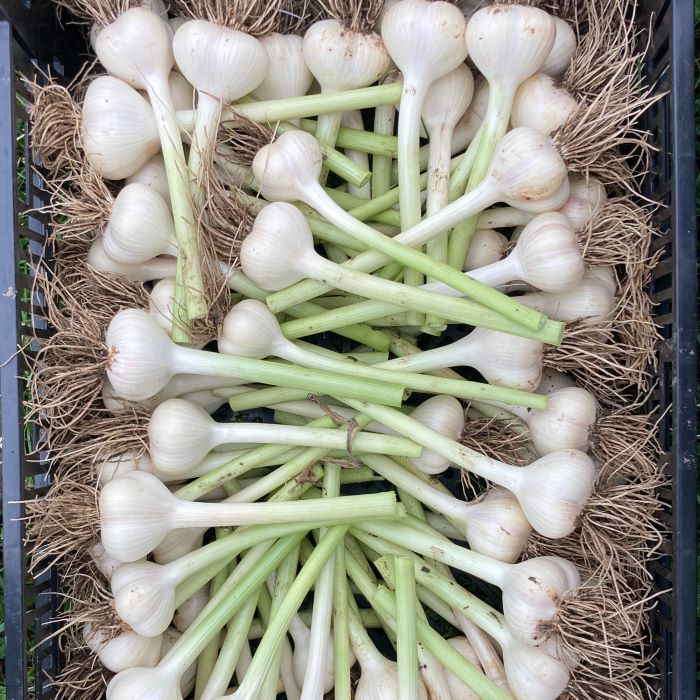
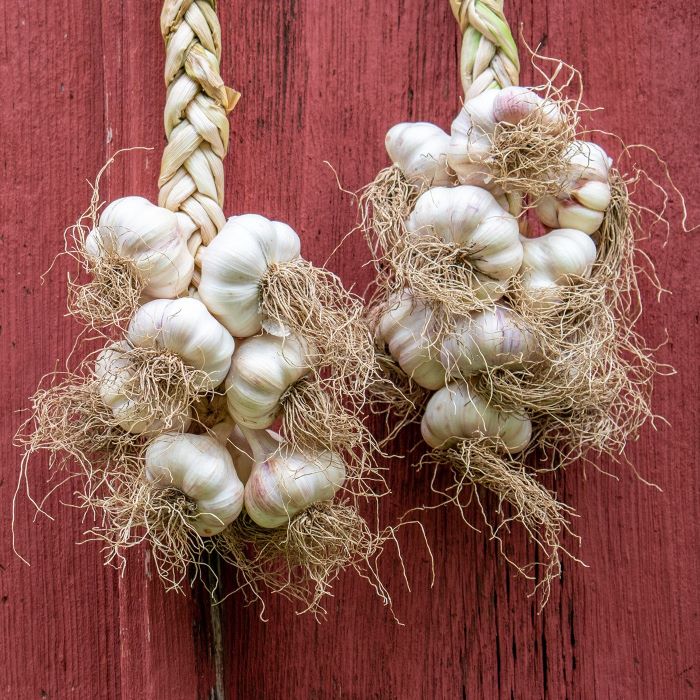
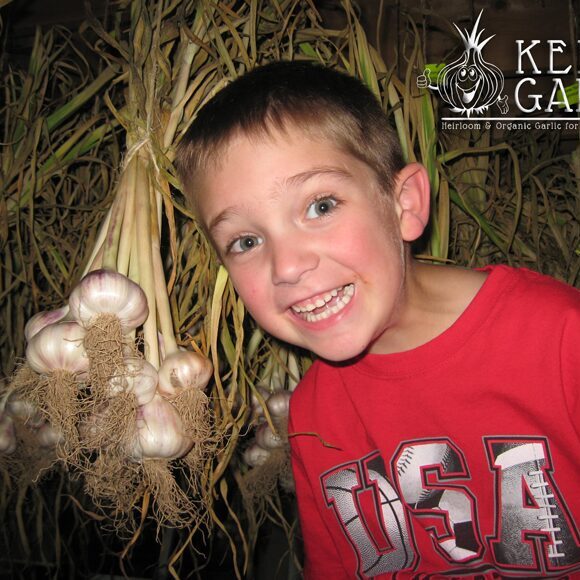
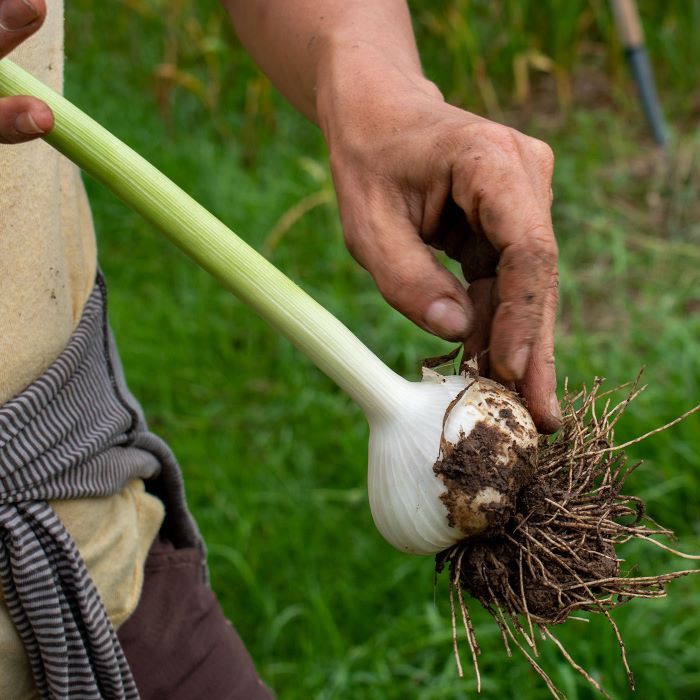
Handling Garlic During Harvest
When it comes time to harvest, handle your garlic bulbs gently. Much like an apple or other soft fruit, garlic bulbs can easily bruise if not treated carefully, which reduces their storage life.
Harvest your garlic when four or five green leaves remain on the plant. Three-leaf wrappers are ideal for more extended garlic storage durations.
If you harvest a garlic plant with four or more green leaves, remove the outer leaves from the garlic plant and clean the outer wrapper of the garlic bulb by brushing the dirt off the bulb and roots.
In doing so, you will not only store a nice, clean garlic bulb but reduce the number of microorganisms that can attack your garlic and threaten its storage lifespan.
For some gardeners, these practices have provided storage that lasts well through the following harvest season.
Have more questions about how to store your garlic? Email us at help@keeneorganics.com

